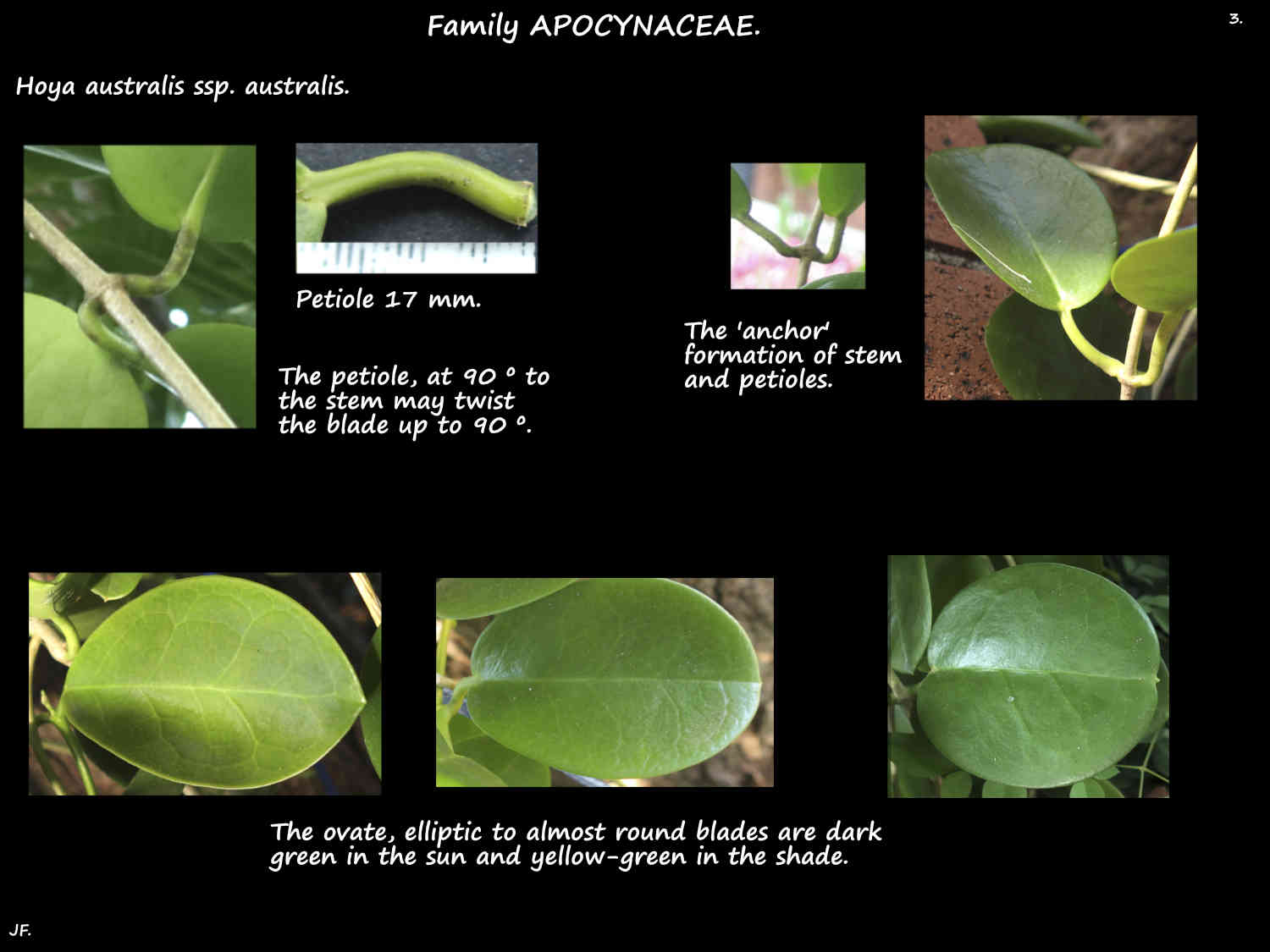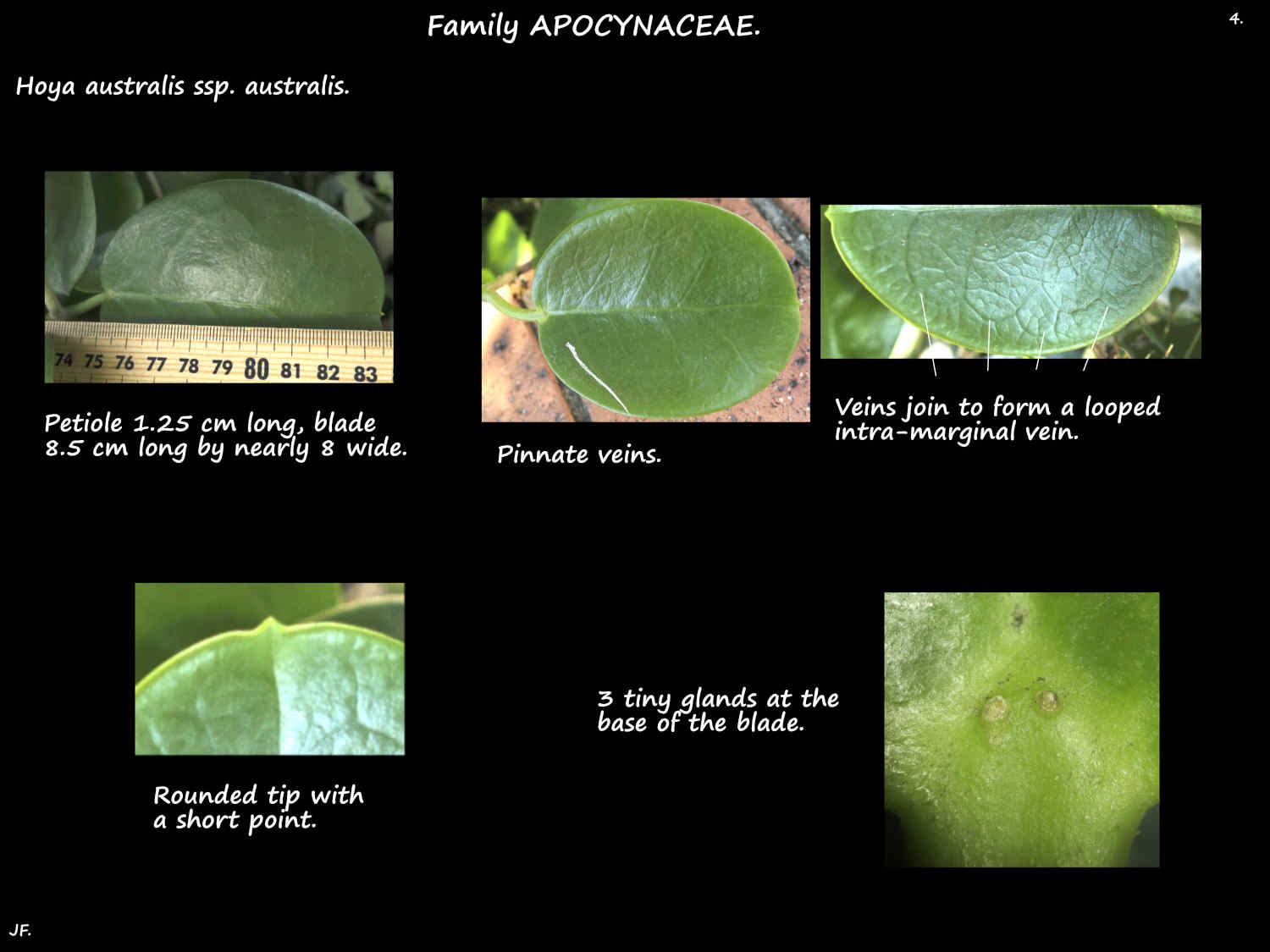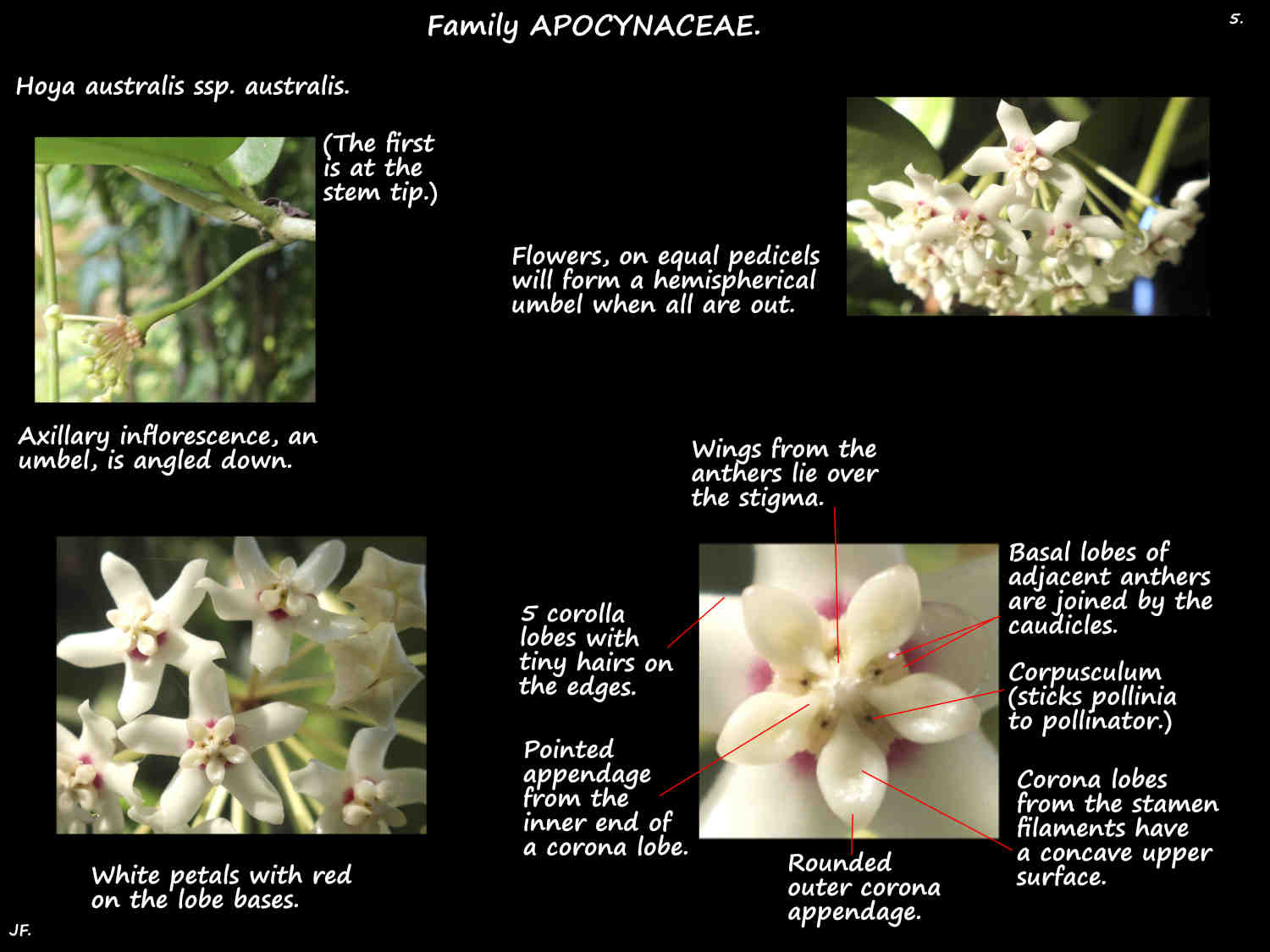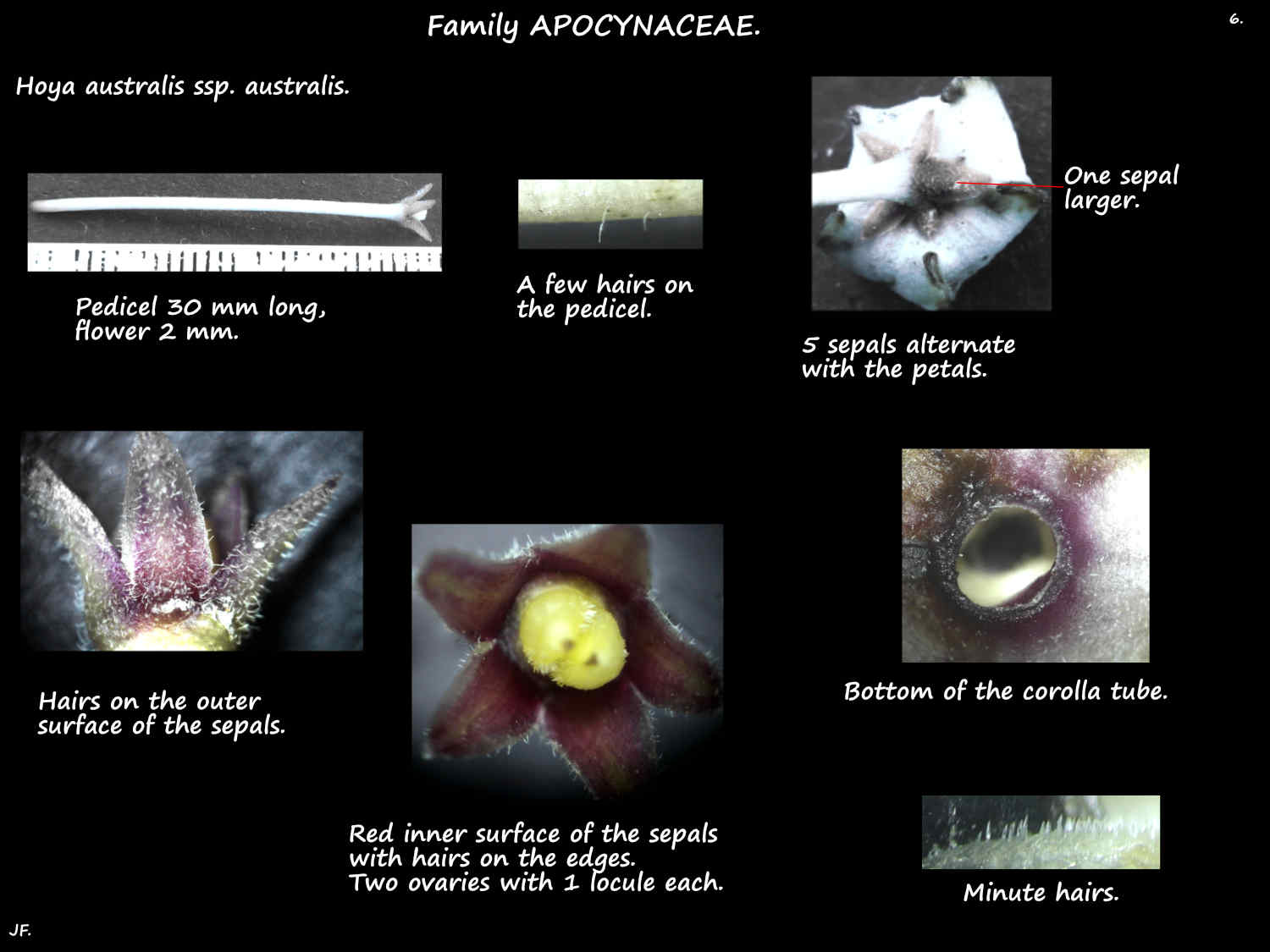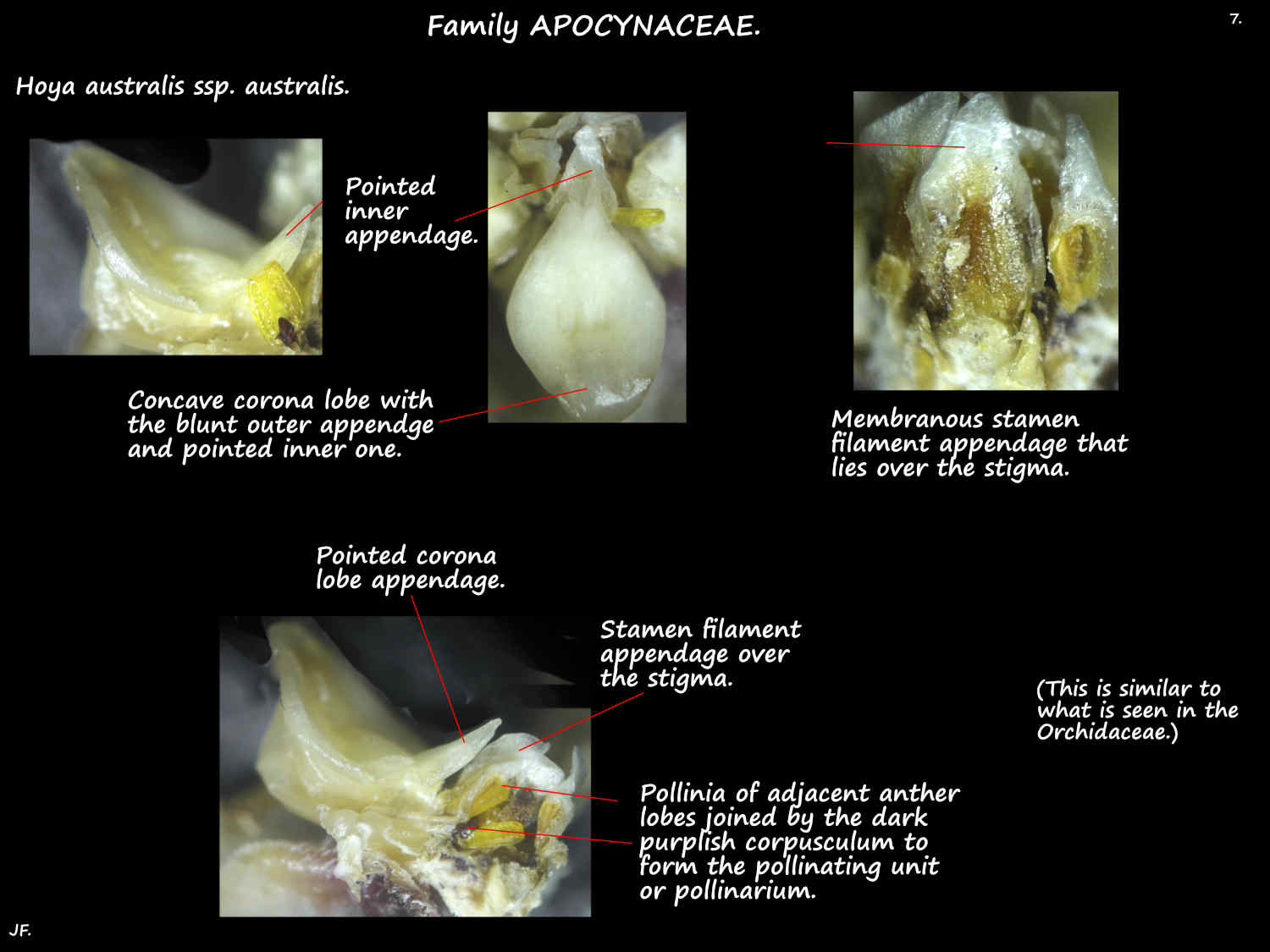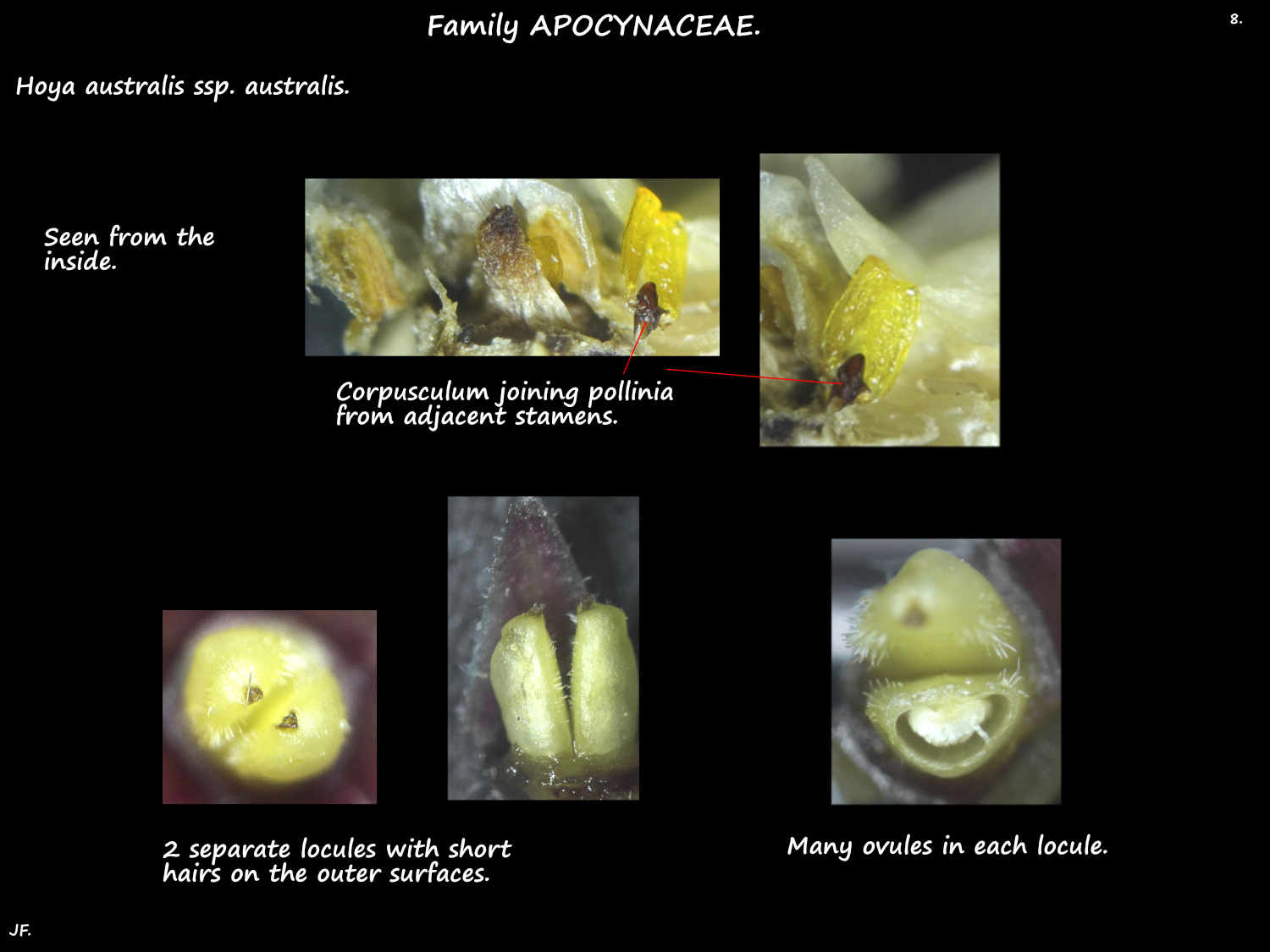Hoya australis complex.
Family Apocynaceae > Subfamily Asclepiadoideae > Tribe Marsdenieae.
Native hoya was previously in Family Asclepiadaceae.
It is native to Australia, including Queensland, and into Southeast Asia.
It is only occasionally seen in gardens here.
Hoya australis is a very variable species with numerous subspecies described.
All have similar flowers with the main differences being their form and leaves.
The species and subspecies are sometimes collectively referred to as the Hoya australis complex.
Young plants are shrubby with branches close to the ground.
Some remain like this while others develop twining stems up to 10 m long.
When stems touch the ground they may develop adventitious roots.
Stems have a white milky sap and many parts have short soft hairs.
The opposite leaves are arranged in 4 ranks (decussate) and all features can vary greatly.
Petioles 0.8 to 3 cm long are often at right angles to the stem.
The blades may be bent back (down) up to 90 degrees.
These 2 features create an anchor shape that may help in climbing.
Blades can be 2 to 15 cm long and 2 to 12 cm wide.
They are ovate, elliptic, oblong or nearly round.
Tips are variously pointed and the base rounded, wedge or heart-shaped.
Succulent to tough blades can be flat or the edges may roll under.
They may have no hairs or be densely hairy underneath and slightly above.
The main veins can be pinnate or radiate from the base.
Usually there are small glands where the blade and petiole meet.
The up to 50 wax-like flowers, on pedicels up to 4 cm long are in an umbel.
Umbels can be spherical (all pedicels equal) to flat (outer pedicels longer).
Pedicels remain and produce new flowers for a few seasons.
The initial umbel appears to be terminal but the stem continues to grow past it.
This makes the umbel axillary where it can produces more flowers.
This happens over a few seasons resulting in a few umbels along the stem.
Radially symmetric wax-like flowers are 2 to 2.5 cm across with parts in 5’s.
Free sepals, to 3 mm long are ovate or triangular and may have tiny basal glands.
There may be minute hairs on many parts.
Petal bases form a short tube with ovate to triangular lobes up to 1 cm long.
The thick wax-like cream to white petals have a deep red base.
The corolla can be bell-shaped or the lobes can be bent back more.
The central cream to white corona lobes are stamen filament appendages.
Their shape and orientation is very variable.
They have a concave upper surface with the edges rolled out and back.
The appendage on the outer end is rounded and that on the inner is pointed.
The stamen filaments also have a membranous wings that lies over the stigma.
Basal lobes of adjacent anthers are joined by a membrane (the caudicle).
Pollen is fused into waxy stalked pollinia that have wings.
The superior ovary, which has a few tiny hairs has a conical stigma.
Flowers produce a lot of nectar.
The occasionally seen fruit are a follicle up to 1.5 cm long.
The numerous seeds have silky hairs up to 3 cm long.
*********************
Hoya australis subsp. australis.
Plants climb by twining or scramble over the ground and other vegetation.
Thin stems, up to 10 m long exude a lot of milky latex when cut.
Many parts have very short soft hairs.
Succulent opposite leaves are on a short thick twisted petiole.
Flat blades, up to 5 or 6 cm long can be ovate, widely elliptic or almost round.
The rounded tip has a short narrow point and the veins are pinnate.
Inflorescences are a hemispherical to spherical umbel with 40 to 50 flowers.
Flowers, on a pedicel 2.5 cm long have 5 free triangular sepals 2.5 mm long.
The short corolla tube has 5 cream to white lobes with a red base.
The petal edges have microscopic hairs.
The 5 corona lobes are formed from the stamen filaments.
Lobes, around 6 mm long by 5 mm wide are concave above with rolled out edges.
The inner end has a pointed appendage and the outer end has a rounded one.
Each anther lobe has a thin appendage that lies over the stigma.
Lateral appendages from the lower anther lobes (caudicles) join those of adjacent lobes.
Fruit are a follicle with numerous seeds with long silky hairs.
J.F.



